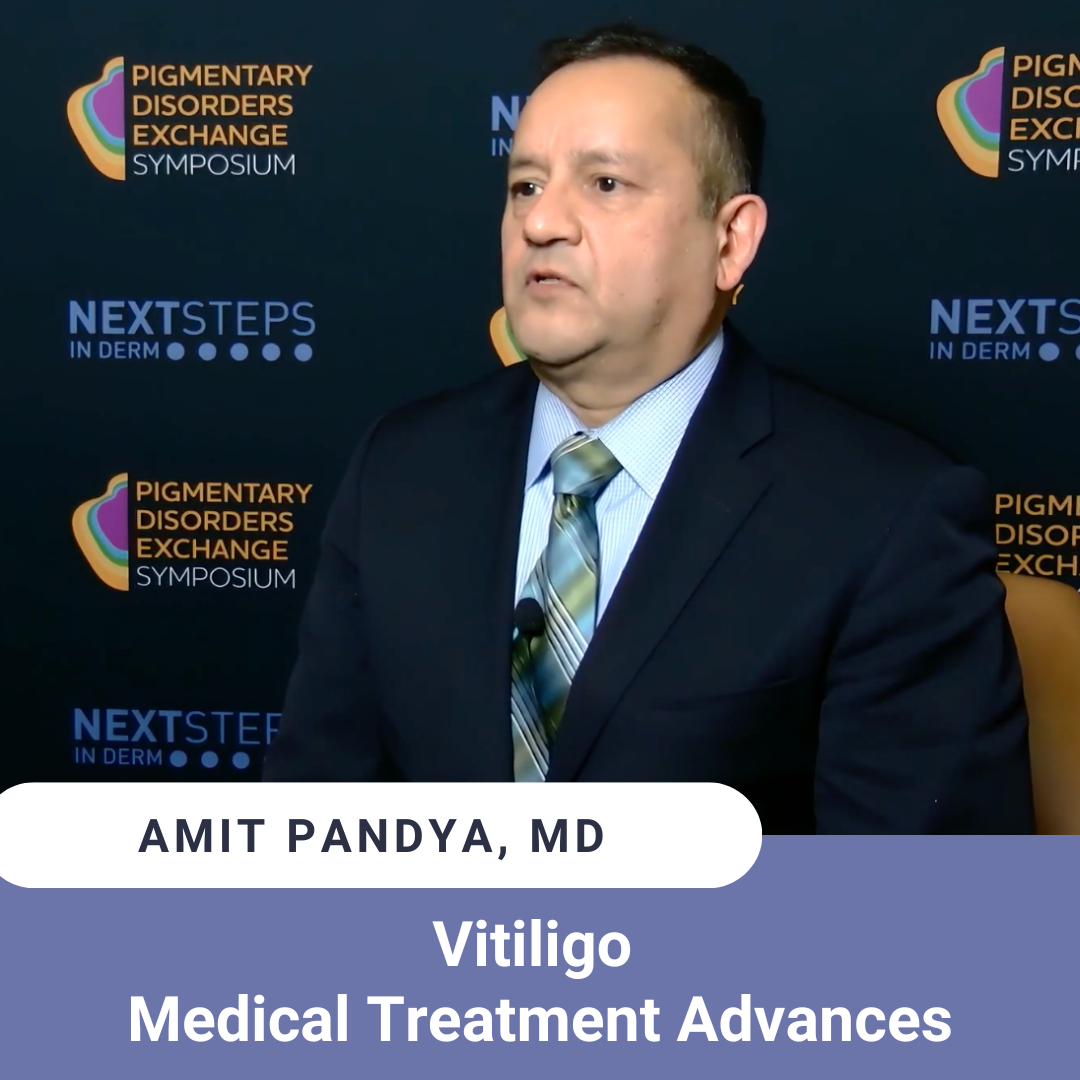Next Steps in Derm, in partnership with Pigmentary Disorders Exchange Symposium interviewed Dr. Amit Pandya, staff dermatologist with Palo Alto Foundation Medical Group and adjunct professor in the department of dermatology at the University of Texas Southwestern Medical Center. Dr. Pandya says this is the most exciting time for him as a dermatologist with new vitiligo medications on the market and more in the pipeline. Find out about follow up studies with ruxolitinib that show enhanced results. Also learn about additional medications in development including a product that addresses an antibody against IL-15.
Further Reading
If you want to read more about medical treatment advances for vitiligo, check out the following articles published in the Journal of Drugs in Dermatology:
Off-Label Uses of JAK Inhibitors in Dermatology
ABSTRACT
The Janus kinase (JAK)-signal transducer and activator of transcription (STAT) pathway is a crucial component of immune function, and JAK inhibitors allow dermatologists to regulate this pathway in certain disease states. Once bound to ligands, JAKs phosphorylate cytokine receptors and STAT proteins, which translocate to the nucleus and activate transcription of immunologic proteins.1 Four JAK isoforms have been identified: JAK1, JAK2, JAK3, and tyrosine kinase 2 (TYK2). The different isoforms bind varyingly to cytokines including interleukin (IL)-2, IL-4, IL-7, IL-9, IL-15, and IL-21. While the first-generation JAK inhibitors — tofacitinib, ruxolitinib, and baricitinib — block multiple JAK isoforms, second generation JAK inhibitors, such as decernotinib, abrocitinib, and upadacitinib, target a particular JAK, reducing adverse effects.
A Potential Alternative Treatment for Vitiligo: An Observational Study on Tacrolimus 0.3% Lotion
ABSTRACT
Vitiligo is a complex multifactorial disorder of depigmentation affecting 0.5 to 2% of the world’s population without specific gender or racial prevalence.1 Though no treatments are FDA approved to repigment vitiligo, topical medications along with phototherapy alone or in combination remain the mainstay of therapy. While Janus Kinase inhibitors and other agents are in development, current topical options are mainly limited to steroid formulations of various potencies or immunomodulatory steroid-sparing agents such as tacrolimus 0.03% or 0.1%.
Did you enjoy this video interview? Find more here.

